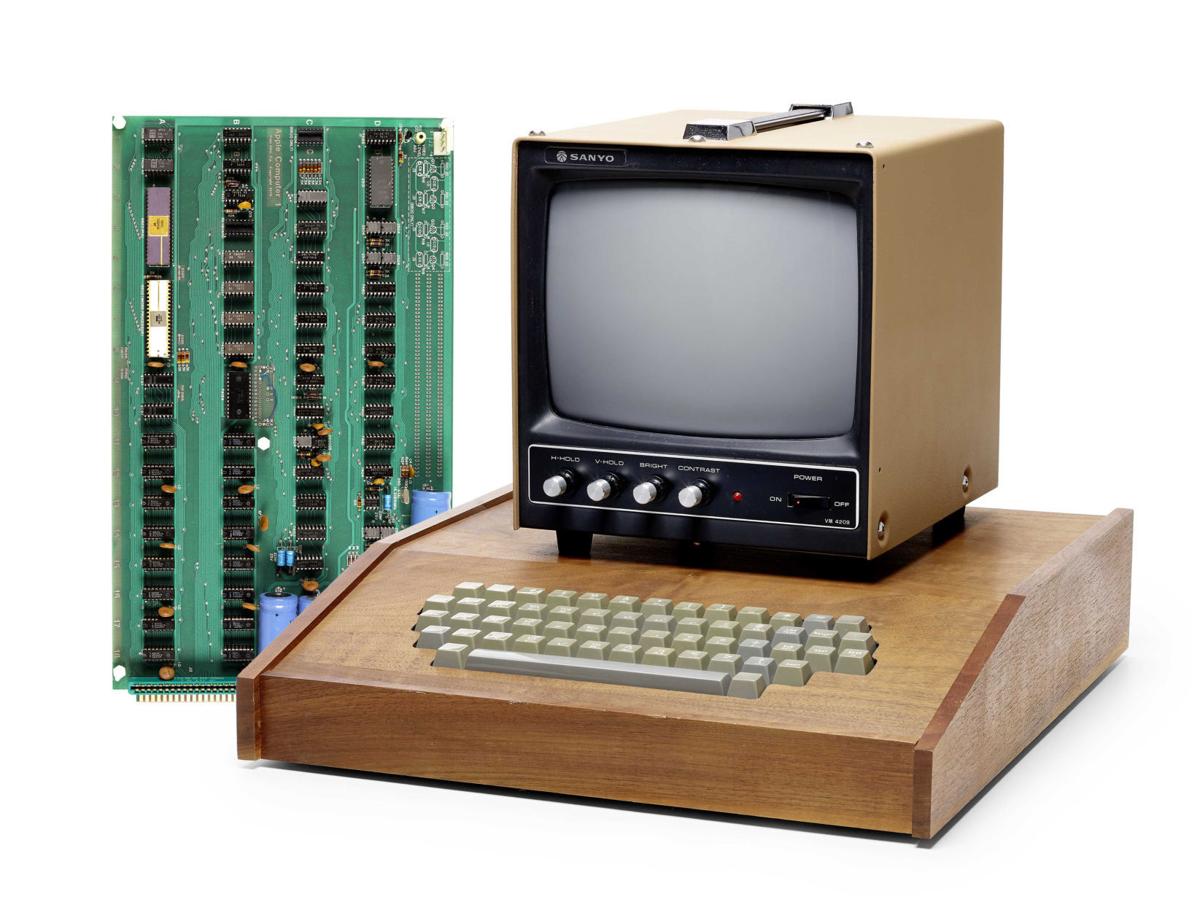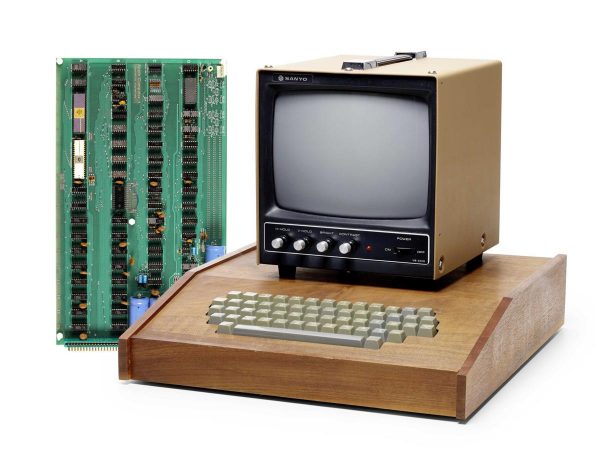The Apple I, also known as the Apple-1, was an early personal computer. They were designed and hand-built by Steve Wozniak. Wozniak’s friend Steve Jobs had the idea of selling the computer. The Apple I was Apple’s first product, demonstrated in April 1976 at the Homebrew Computer Club in Palo Alto, California. It went on sale on July 1976 at a price of $666.66, because Wozniak liked repeating digits and because they originally sold it to a local shop for $500 and added a one-third markup. About 200 units were produced. Unlike other hobbyist computers of its day, which were sold as kits, the Apple I was a fully assembled circuit board containing about 30 chips. However, to make a working computer, users still had to add a case, power supply, keyboard, and display. An optional board providing a cassette interface for storage was later released at a cost of $75.
The Apple I is sometimes credited as the first personal computer to be sold in fully assembled form; however, some argue that the honour rightfully belongs to other machines, such as the MOS Technology KIM-1, Datapoint 2200, or more commonly the Altair 8800 (which could be bought in kit or assembled form at extra cost). One major difference sets the Apple I apart — it was the first personal computer to use a keyboard.
The Apple I’s built-in computer terminal circuitry was distinctive. All one needed to be a keyboard and an inexpensive video monitor. Competing machines such as the Altair 8800 generally were programmed with front-mounted toggle switches and used indicator lights (red LEDs, most commonly) for output, and had to be extended with separate hardware to allow connection to a computer terminal or a teletype machine. This made the Apple I an innovative machine for its day. In April 1977 the price was dropped to $475. It continued to be sold through August 1977, despite the introduction of the Apple II in April 1977, which began shipping in June of that year. The Apple II was otherwise identical to the Apple I, except it added more RAM, colour graphics, sound capabilities, additional expansion slots and was notably contained in a styled plastic case with an integrated keyboard. Apple had dropped the Apple 1 from its price list by October 1977, officially discontinuing it.
As of 2008, an estimated 30 to 50 Apple Is are still known to exist, making it a very rare collector’s item. An Apple I reportedly sold for $50,000 at auction in 1999; however, a more typical price for an Apple I is in the $14,000–$16,000 range.
Today, the Apple computer has upgraded in several ways through the slim and portable nature, distinct iOS, screen display, less virus attack, but it would never have had the global value it now has if they did not believe in it and sell it out. Surround yourself with people that believe in you but more than that believe in yourself because the only ideas that make it to the top are those that someone dares to sell.
Finally, the people who make Forbes list and stay winning do not solely concentrate on the technical side of an idea, but also diversify to understand business and people. If you want to stay designing and creating ideas, all when and good, but have a spice of business knowledge to help you as you build up solutions.
Source
Mac history
Featured Image Source: Tucson


